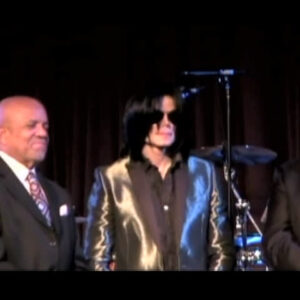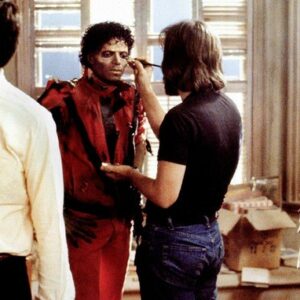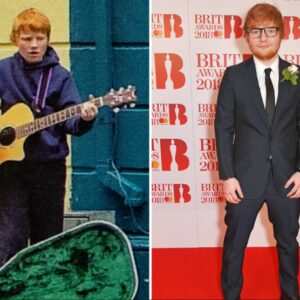In the vibrant world of animation, some films go beyond mere entertainment and tap into universal themes, offering deeper narratives through the clever use of symbolism. DreamWorks’ Trolls, released in 2016 and starring Anna Kendrick as the cheerful and optimistic Poppy, is one such example. Behind the colorful spectacle of its animation and the catchy pop music soundtrack lies a sophisticated layer of symbolism that shapes and elevates the storyline, making Trolls a film that resonates on multiple levels with audiences of all ages.
At first glance, Trolls appears to be a light-hearted film about a group of joyful, small creatures that sing, dance, and hug their way through life. However, as the plot progresses, it becomes clear that the film delves into important themes such as emotional wellbeing, community, and the nature of happiness. Through the strategic use of color, music, and character contrasts, the film weaves a rich tapestry of meaning that reflects a more profound commentary on our search for connection, joy, and leadership in challenging times.
Colors as Emotional States
One of the most striking features of Trolls is its vivid color palette, which is not just for aesthetic pleasure but plays a critical role in expressing the emotional states of the characters and the world they inhabit. The world of the Trolls is awash with bright pinks, yellows, greens, and blues—colors that immediately evoke a sense of joy, optimism, and childlike wonder. These warm and energetic hues are closely tied to Poppy, the film’s protagonist, who embodies the positivity and hopefulness that these colors represent.
Poppy’s radiant pink appearance is a direct reflection of her optimistic nature. She is a leader who believes in the power of love, friendship, and community, and the colors around her only serve to reinforce this perspective. The Trolls, as a whole, are vibrant and lively, their happiness symbolized by the technicolor world they inhabit.
In stark contrast, the Bergens, who are portrayed as grim and joyless creatures, live in a world drained of color. The muted grays, browns, and dark blues that characterize the Bergen town symbolize their emotional void and deep dissatisfaction with life. Their belief that happiness can only be attained by consuming Trolls—a twisted metaphor for the idea that joy must be extracted from an external source—further emphasizes their lack of internal fulfillment.
As the story progresses, however, we witness a shift in the color dynamics. When the Bergens begin to experience genuine happiness, particularly through their interactions with the Trolls and the realization that happiness comes from within, the colors in their world begin to brighten. This shift serves as a visual representation of emotional transformation, subtly highlighting the film’s message that happiness is not something to be found in external consumption, but something to be cultivated from within.
Music as a Unifying Force
Music, in Trolls, is far more than just an auditory treat; it serves as a powerful symbol of unity, healing, and connection. Throughout the film, musical sequences are moments when the characters—whether Troll or Bergen—come together, transcending their differences. Music has the ability to bridge gaps and break down barriers, fostering understanding and empathy in a way that words or actions alone cannot.
The film’s soundtrack, which features hit songs like “Can’t Stop the Feeling” by Justin Timberlake, underscores this theme. When the Trolls sing and dance, they are not just performing; they are sharing their joy with others and creating a sense of belonging and community. Poppy’s relentless belief in the power of music to unite people is vindicated when even the Bergens, who have long been devoid of joy, are moved by the music to rediscover happiness.
The film also uses music to symbolize the emotional healing that the characters experience. Each song represents a pivotal moment in the narrative, whether it’s the Trolls singing to express their unwavering optimism or the Bergens slowly realizing that joy can be found in life’s small moments. In the climactic scene, where both Trolls and Bergens sing together, music becomes the ultimate unifying force that dissolves the divisions between them, illustrating that true harmony—both literal and metaphorical—is achieved through shared experiences and emotional openness.
The Bergen and Troll Dichotomy: A Social Commentary
The contrast between the Trolls and the Bergens in Trolls extends beyond mere character design or lifestyle differences. On a deeper level, the Troll-Bergen dichotomy represents a broader commentary on societal divides, particularly in the context of happiness and social class. The Bergens are portrayed as a downtrodden, joyless group who believe that their only chance at happiness is through consuming Trolls—an allegory for the idea that happiness is an external commodity that must be acquired, often at the expense of others.
This notion reflects real-world social dynamics where certain individuals or groups may feel that their happiness or success can only be achieved by taking from others, whether it be through material means, status, or power. The Bergens’ consumption of Trolls can be interpreted as a metaphor for consumerism or the belief that happiness is a finite resource, accessible only to those who “take” it.
In contrast, the Trolls represent a more holistic and internal approach to joy. Their happiness is derived from within, nurtured by their sense of community, their love for music, and their daily ritual of “hug time”—a physical manifestation of their connection to one another. This contrast between the internal joy of the Trolls and the external, consumption-driven approach of the Bergens underscores the film’s central theme: that true happiness cannot be obtained through external means but must be cultivated from within, through relationships, self-expression, and community.
Hug Time: A Symbol of Connection
One of the most endearing and symbolic elements in Trolls is the concept of “hug time,” a recurring event in the Trolls’ daily lives where they pause everything to share a hug with those around them. While this might seem like a simple and whimsical ritual, it carries a deeper significance in the context of the film’s themes of connection and emotional fulfillment.
“Hug time” represents the importance of physical connection, empathy, and love in the Troll community. It’s a reminder that genuine happiness comes not from material possessions or achievements, but from the bonds we share with others. In a world that often prioritizes individual success or external validation, the Trolls’ emphasis on hugging and physical affection serves as a reminder of the simple yet profound impact that human connection can have on our emotional wellbeing.
In contrast, the Bergens, who live in isolation and rarely, if ever, engage in physical affection, are depicted as emotionally distant and disconnected from one another. Their lack of physical connection mirrors their emotional emptiness, and it is only when they begin to embrace the idea of connecting with others—both literally and figuratively—that they start to experience true joy.
Poppy’s Journey: Leadership Through Optimism
At the heart of Trolls is the character of Poppy, whose journey to save her friends from the Bergens is not just an adventure but a symbol of leadership and optimism. Poppy’s relentless positivity and belief in the power of love and friendship are what drive her to take action, even in the face of overwhelming adversity.
Poppy’s leadership is characterized not by authority or command, but by her ability to inspire others through her optimism. She leads by example, showing her fellow Trolls—and even the Bergens—that happiness and success are possible when one believes in better outcomes and refuses to give in to fear or cynicism. In a world that often equates leadership with power or control, Poppy’s approach is a refreshing reminder that true leadership is about bringing people together, fostering hope, and persevering through challenges with a positive mindset.
Her journey also underscores the importance of resilience and perseverance in the face of adversity. Throughout the film, Poppy encounters numerous obstacles, yet her unwavering belief in the power of love and connection never falters. This resilience, coupled with her empathy and compassion for others, makes Poppy not just a leader, but a symbol of hope for both the Trolls and the Bergens.
Conclusion: A Tale of Joy, Connection, and Leadership
At its core, Trolls is a film about joy, connection, and leadership. Through its use of vibrant colors, uplifting music, and dynamic character contrasts, the film weaves a rich narrative that explores the nature of happiness and the importance of community. The Trolls, with their bright colors, music, and “hug time,” represent a way of life that values internal joy and connection, while the Bergens serve as a cautionary tale about the dangers of seeking happiness through external means.
Ultimately, Trolls reminds us that true happiness comes from within, and that leadership is not about power or control, but about bringing people together and fostering a sense of unity and hope. Through its layered symbolism and engaging storyline, Trolls offers a timeless message about the power of optimism, community, and connection in the pursuit of joy.





